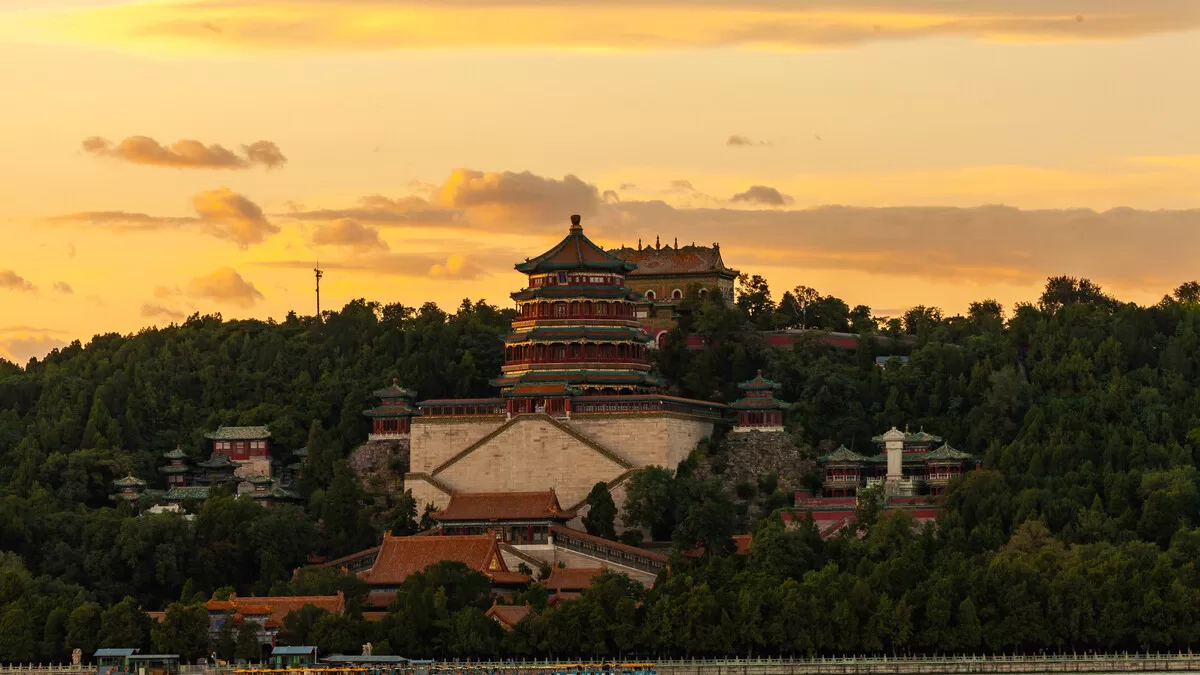The Tower of Buddhist Incense, also known as the Buddhist Fragrance Pavilion or Fo Xiang Ge in Chinese, is a prominent structure located within the Summer Palace in Beijing, China. It is one of the most iconic landmarks of the Summer Palace and a key attraction for visitors.
Architecture and Location:
The Tower of Buddhist Incense is an elegant and majestic three-story pavilion, standing at the highest point of the Longevity Hill in the Summer Palace. It is positioned on a stone foundation and reaches a height of approximately 41 meters (135 feet). The pavilion is built in traditional Chinese architectural style, characterized by its prominent yellow-glazed double eaves, intricate carvings, and vibrant colors.
Historical Significance:
The construction of the Tower of Buddhist Incense began during the reign of Emperor Qianlong in the 18th century and was completed under the guidance of subsequent emperors. It served as an important space for religious ceremonies, primarily associated with the Buddhist faith.
Symbolism and Purpose:
The Tower of Buddhist Incense holds symbolic importance, representing the connection between the imperial power and Buddhism. It was initially constructed to offer a place for the emperor to pray and seek enlightenment. The tower also served as a vantage point to enjoy the panoramic views of the surrounding landscape.
Interior:
The interior of the Tower of Buddhist Incense is designed to reflect the grandeur and opulence of imperial architecture. The walls are adorned with delicate paintings, calligraphy, and ornate decorations. The central axis of each floor is dominated by a Buddha statue, showcasing various poses and mudras. Elaborate frescoes depict scenes from Buddhist mythology and important historical events.
Views from the Tower:
As the tallest structure within the Summer Palace, the Tower of Buddhist Incense offers breathtaking views of Kunming Lake, Longevity Hill, and the sprawling gardens of the palace. Visitors can climb to the top of the tower using a winding staircase and enjoy panoramic vistas of the surrounding natural beauty.
Surrounding Environment:
The Tower of Buddhist Incense is situated within the vast grounds of the Summer Palace, a UNESCO World Heritage Site. The pavilion is surrounded by lush greenery, including meticulously landscaped gardens, ancient trees, and tranquil water bodies. The harmonious integration of architecture with nature creates a serene and picturesque ambiance.
Cultural Importance:
The Tower of Buddhist Incense stands as a testament to the rich cultural and architectural heritage of China. It represents the amalgamation of Buddhism, imperial power, and Chinese artistic craftsmanship. The pavilion attracts tourists and devotees from around the world, offering them a glimpse into the country’s history, spirituality, and natural beauty.
Restoration Efforts:
Over the years, the Tower of Buddhist Incense has undergone several rounds of restoration and renovation to preserve its original splendor. The Chinese government, along with cultural preservation organizations, has worked tirelessly to ensure the longevity of this iconic structure.
Visiting the Tower of Buddhist Incense in the Summer Palace allows visitors to immerse themselves in the grandeur of imperial China, appreciate the artistic mastery of traditional architecture, and experience the serenity and beauty of the surrounding natural landscape.


